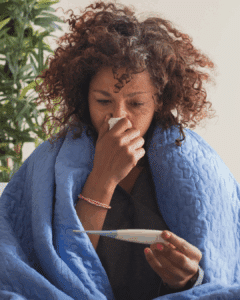
China officinalis vs. Opium: Differentiating Remedies in Practice
China officinalis vs. Opium: Differentiating Remedies in Practice Accurate homeopathic

When your child wakes in the night with a sore throat, it can feel worrying and urgent. The good news is that many sore throats are self-limiting and can be safely supported at home with rest, fluids, and, where appropriate, homeopathic remedies.

Homeopath and CHE Community Manager
Before choosing a remedy, it’s important to know how to take the acute case; the art of observing your child’s unique symptoms. This is the foundation of effective home prescribing.
The most important thing you can do as a parent-prescriber is to slow down and really look. Acute prescribing is not about ticking boxes (“sore throat = X remedy”) but about discovering the particular way your child experiences their illness.
Here’s what to watch for:
Onset
Location:
Sensation:
Appearance:
Modalities (better/worse):
Concomitants (accompanying symptoms):
Children’s emotional responses in acute illness are often clear and can guide you strongly toward the right remedy.
Ask yourself:
Emotional states can change the whole picture and often tip the scale between two close remedy options.
Homeopathy looks at the whole child, not just the throat. Observe:
Once you’ve gathered all these details, compare them with remedy pictures in your materia medica or acute prescribing guide. Some remedies often considered for sore throats include:
Note: These are just some of the remedies mentioned in Homeopathy at Home by Marcus Fernandez. Your careful notes and observation will help you identify the best individual remedy for your child. Click here to get your copy.
Taking an acute case is about seeing your child afresh; noticing physical changes, mood shifts, and the small details that make their sore throat unique.
With practice, you’ll grow more confident in spotting these clues and matching them to the right remedy.
Home prescribing is not just about medicine, it’s about presence, listening, and understanding your child’s experience in that moment.
If you want to master acute cases like sore throats and so much more, our free 5-hour Home Prescriber Course is the perfect next step. You’ll get practical guidance, case examples, and tools to confidently support your children at home.
Disclaimer
The content shared here is intended for informational purposes only and should not be considered a replacement for professional medical advice, diagnosis, or treatment from a qualified and licensed healthcare provider. The views and opinions expressed in this presentation are those of the presenter and do not necessarily represent those of CHE or any affiliated organizations.

China officinalis vs. Opium: Differentiating Remedies in Practice Accurate homeopathic

Understanding High Histamine Reactivity in Children: A Case-Based Perspective Acute

Oscillococcinum for Flu: The Brand You Know, the Remedy You